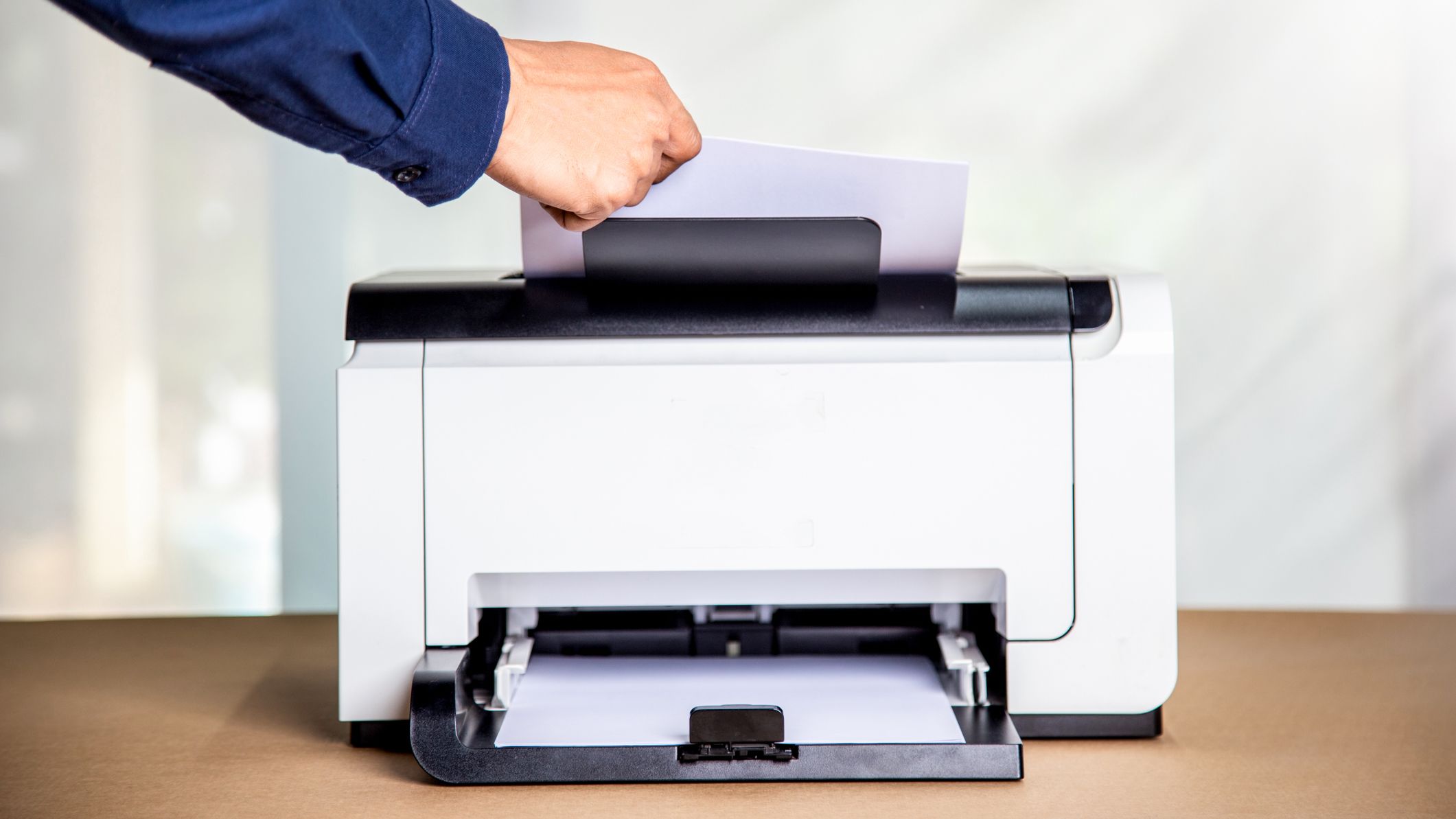How does an inkjet printer work?
Inkjet printers are some of the most commonly used, but how do they work and what are they best at?


There are many types of printer, including laser, inkjet and LED. There can be no doubt that of the three, inkjet printers are the simplest to understand on a technical level.
Despite this simplicity, they are actually predated by laser printers. Invented in 1976 by the Hewlett Packard corporation, it was with the rise of the personal computer in the 1990s that inkjet printers really took off in popularity.
Today, the best inkjet printers can compete with laser printers in terms of speed and reliability, while remaining one of the most affordable printer types in terms of initial purchase.
How do inkjet printers work?
As each sheet of paper is pulled through an inkjet printer, the printing arm moves across it at great speed. As the arm moves, tiny droplets of ink are shot onto the paper, which together make up the text or image that is being printed.
The dots are so small that, to the naked eye, the ink on a page that's come out of an inkjet printer appears to be solid colours. Under a magnifying glass, however, it's revealed to consist of a huge mesh of the dots.
As the paper comes out of the printer, it's pulled through two heated rollers, which rapidly dry the ink to prevent the finished result from smudging, or staining the hands of the user who retrieves the page. This is why pages are hot to the touch when they're first printed.
As a result of the method, especially dark pages produced from an inkjet printer might be damp to the touch, and may require special care for a short time after printing.
Get the ITPro daily newsletter
Sign up today and you will receive a free copy of our Future Focus 2025 report - the leading guidance on AI, cybersecurity and other IT challenges as per 700+ senior executives
The speed at which an inkjet printer can produce finished pages varies from manufacturer to manufacturer, but for several years have been capable of up to 75 pages per minute.
Inkjet printers will need ink cartridge replacements, which may be grouped as colour cartridges and black cartridges, or separated into each of the four colours that inkjet printers use. You may have noticed that instead of red, green and blue (RGB), printer ink comes in cyan, magenta, yellow and black (CMYK). But why?
On a computer monitor, the colours are made up of many millions of pixels, each with its own RGB value. Because the default state of a pixel is 0, or black, a computer adds light to each pixel until it hits white, or any one of the 16,777,216 colours in between. This is known as an additive colour model.
For printing, on the other hand, one starts with white — the blank page — and must darken this to produce colour. This is a subtractive model, and for this purpose the colour blocks CMYK mix to produce the best range of individual colours.
Inkjet printers use printer cartridges, which contain the liquid ink necessary for the print process. Laser and LED printers, on the other hand, use something called toner. This is colour powder, which is put onto the paper using negative charge and then dried rapidly with heat.
Ink cartridges have often been considered a great drain on company finances, and are part of the reason why many businesses opt for laser or LED printers instead. However, this is not always true and there are a number of ways that businesses can save money on printer ink.
What are inkjet printers best for?
Inkjet printers are the cheapest and smallest printer options available, so are often a good bet for small and medium businesses that require a printer but aren't ready to invest in a laser or LED printer system.
Moreover, inkjet printers produce the best quality reproductions of photos, so there are a number of cases in which businesses might consider an inkjet printer their best bet.
Certainly, advances in inkjet technology and ink usage have reversed the long-held belief that inkjets cost more per page than their counterparts, with some of the newest options offering costs as low as 1p per page for black and white copy.
There are a number of reasons that one might consider a laser printer versus an inkjet printer for the workplace, with no easy answer available as to which will be best for any given business.

Rory Bathgate is Features and Multimedia Editor at ITPro, overseeing all in-depth content and case studies. He can also be found co-hosting the ITPro Podcast with Jane McCallion, swapping a keyboard for a microphone to discuss the latest learnings with thought leaders from across the tech sector.
In his free time, Rory enjoys photography, video editing, and good science fiction. After graduating from the University of Kent with a BA in English and American Literature, Rory undertook an MA in Eighteenth-Century Studies at King’s College London. He joined ITPro in 2022 as a graduate, following four years in student journalism. You can contact Rory at rory.bathgate@futurenet.com or on LinkedIn.
-
 Bigger salaries, more burnout: Is the CISO role in crisis?
Bigger salaries, more burnout: Is the CISO role in crisis?In-depth CISOs are more stressed than ever before – but why is this and what can be done?
By Kate O'Flaherty Published
-
 Cheap cyber crime kits can be bought on the dark web for less than $25
Cheap cyber crime kits can be bought on the dark web for less than $25News Research from NordVPN shows phishing kits are now widely available on the dark web and via messaging apps like Telegram, and are often selling for less than $25.
By Emma Woollacott Published
-
 The race is on for higher ed to adapt: Equity in hyflex learning
The race is on for higher ed to adapt: Equity in hyflex learningWHITEPAPER Fulfil student and faculty needs
By ITPro Published
-
 Practical ergonomics guide for education
Practical ergonomics guide for educationWHITEPAPER Save energy, focus, and promote overall well-being
By ITPro Published
-
 How to manage – and mitigate – performative working
How to manage – and mitigate – performative workingFeature An increasing number of people are putting on a show of working, rather than actually getting on with it
By Peter Ray Allison Published
-
 The ultimate guide to 3D
The ultimate guide to 3DWhitepaper Creative boost breaks
By ITPro Published
-
 Developing an end-to-end process for virtual photography
Developing an end-to-end process for virtual photographyWhitepaper Sharing the best practice of creating production-quality photographs with software
By ITPro Published
-
 Breaking down the barriers to 3D design
Breaking down the barriers to 3D designWhitepaper Designing for the future
By ITPro Published
-
 IDC: The business value of IBM Maximo
IDC: The business value of IBM MaximoWhitepaper Integral to the transformation of asset management
By ITPro Published
-
 UK's four-day week trial ends, leads to reduced burnout and sick days
UK's four-day week trial ends, leads to reduced burnout and sick daysNews Organisations reported overwhelmingly-positive results from the world's largest trial of this kind
By Rory Bathgate Published